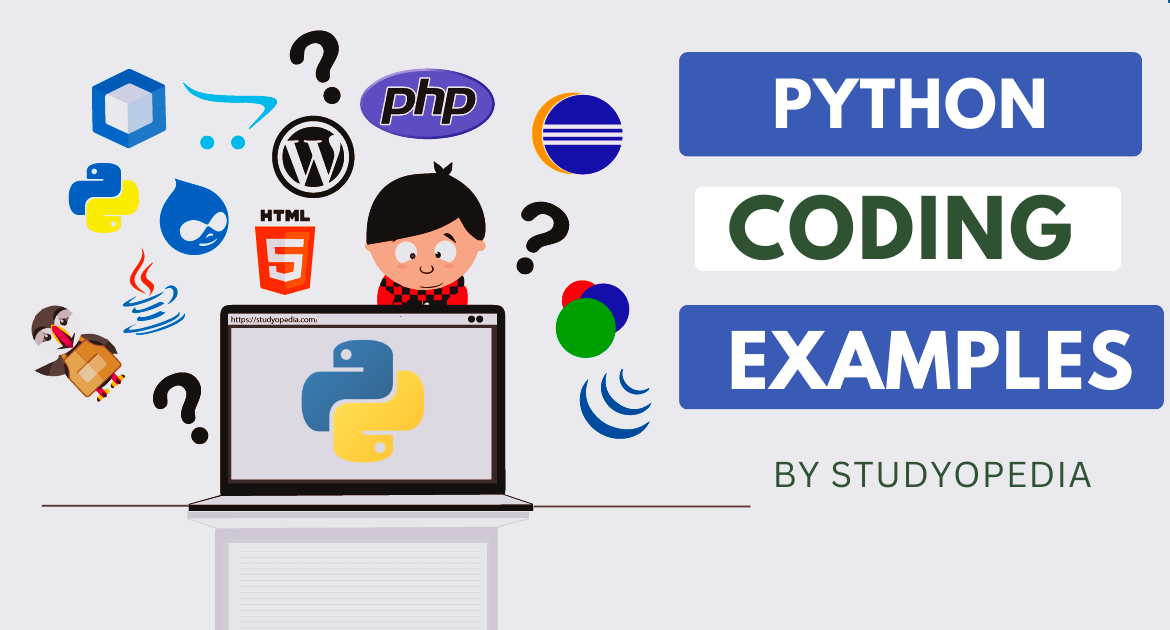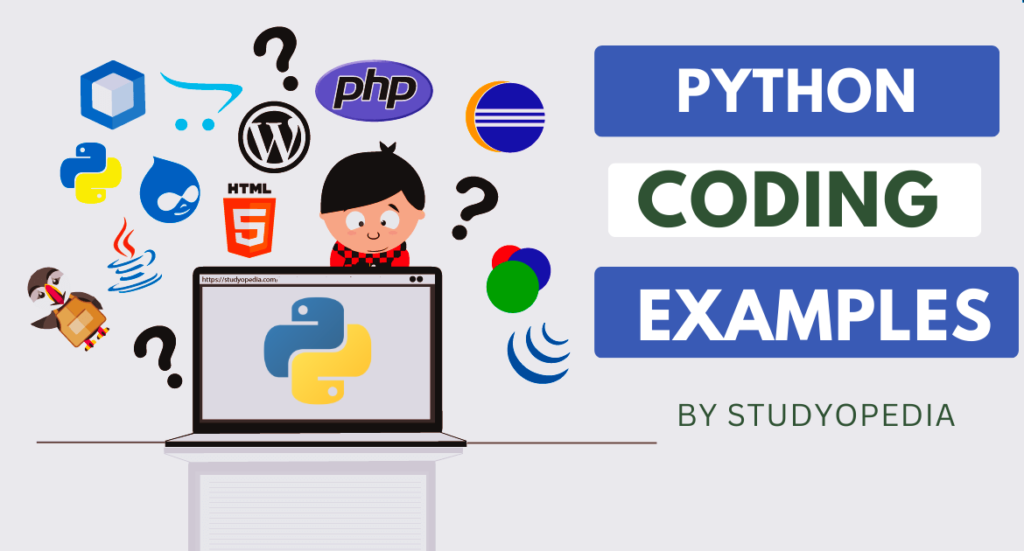
13 Sep Python Programming Examples
Python was developed by Guido van Rossum and released in 1991. Python is a powerful, interpreted, object-oriented programming language. The Programming Examples cover basic as well as advanced Python programs.

We have made a list of live-running Python examples topic-wise. Let’s begin:
Python Tuples
- Create a Tuple
- Create an Empty Tuple
- Access values in a Tuple?
- Check the existence of an item in a Tuple
- Indexing in Tuples
- Fetch a specific element with indexing in Tuples
- Negative indexing in Python Tuples (Left-to-right traversal)
- Slicing in Tuples
- Range of Indexes in Tuples
- Range of Negative Indexes in Tuples
- Can we update Tuple values?
- Get the total length of the Tuple
- Concatenate two Tuples
- Get the maximum value from a Tuple
- Get the minimum value from a Tuple
- Convert a List into a Tuple
- Join two or more Tuples
- Delete items from a Tuple
Python Dictionary
- Create a Dictionary
- Create an Empty Dictionary
- Access values in a Dictionary
- Access values in a Dictionary using the get() method
- Print all the keys of a Dictionary
- Print all the values of a Dictionary
- Update values in a Dictionary
- Add elements to an already create Dictionary
- Delete an element in a Dictionary with a specific key
- Delete the Dictionary completely
- Empty The Dictionary
- Delete keys from the Dictionary
- Delete a Key from the Dictionary and Return the corresponding value
- Iterate through a Dictionary
- String representation of a Dictionary
- Get the length of the Dictionary
- Make a copy of the Dictionary
- Create a MultiDimensional Dictionary
- Create a Nested Dictionary
- Access values from a Nested Dictionary
Python Lists
- Create a List
- Create a List with different datatypes
- Access values from a List
- Update values from a List
- Remove an element from a List
- Remove an element from a specific position in a List
- Remove a specific element from a List using remove()
- Remove all elements (delete the entire list)
- Remove multiple elements from a List
- Fetch elements from a List using the index number
- Negative Indexing in Lists
- Slice Lists
- Range of indexes
- Iterate through a List
- Add elements to an already created List
- Add an element at a specific index in a List
- Check if a specific item exists in a List
- Extend the List by adding another List to the end
- Get the Length of a List
- Get the maximum from a List
- Get the minimum from a List
- Make a copy of the List
- Sort a List
- Reverse the order of a List
- Join Lists
- Create a Multi-Dimensional List
- Access elements in a Multi-Dimensional List
- Add elements to the end of a Multi-Dimensional List
Python Sets
- Create a Set
- Create a Set with different datatypes
- Loop through a set and print all the values
- Get the Length of a Set
- Access items in a Set
- Add an item to a Set
- Remove an item from a set using remove()
- Remove item from a set using discard()
- Empty a Set
- Delete the complete set
- Join Two Sets
- Return the difference between 2 or More Sets
- Keep only duplicate items in two Sets
- Keep all items in the two sets except the duplicates
- Make a copy of the Set
- Union of Sets
If you liked the tutorial, spread the word and share the link and our website Studyopedia with others.
For Videos, Join Our YouTube Channel: Join Now


No Comments